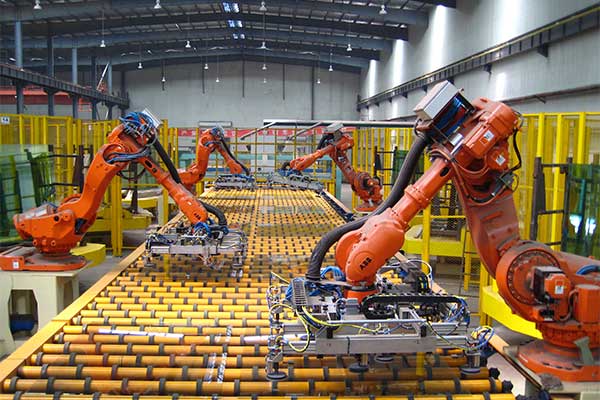January services economy activity sees a solid start to 2022
The Services PMI—at 55.2 (a reading of 50 or higher signals growth)—increased 6.0% over December’s 49.2, which was down 6.9% compared to November’s 55.5. Through November, the Services PMI had grown for 30 consecutive months.

Coming off of a December decline, January services economy activity kicked off 2023 with a pivot back to growth, according to the new edition of the Services ISM Report on Business, which was issued late last week by the Institute for Supply Management (ISM).
The Services PMI—at 55.2 (a reading of 50 or higher signals growth)—increased 6.0% over December’s 49.2, which was down 6.9% compared to November’s 55.5. Through November, the Services PMI had grown for 30 consecutive months. What’s more, prior to December’s PMI contraction, services growth had been intact for 152 of the last 154 months through November.
The January Services PMI is 0.5% below the 12-month average of 55.7, with March 2022s 58.4 and December 2022’s 49.2 marking the respective high and low readings for that period.
ISM reported that 10 of the service sectors it tracks saw gains in January, including: Agriculture, Forestry, Fishing & Hunting; Utilities; Other Services; Management of Companies & Support Services; Public Administration; Educational Services; Accommodation & Food Services; Real Estate, Rental & Leasing; Health Care & Social Assistance; and Professional, Scientific & Technical Services. The eight industries with declines were: Transportation & Warehousing; Retail Trade; Arts, Entertainment & Recreation; Mining; Construction; Information; Finance & Insurance; and Wholesale Trade.
The report’s equally weighted subindexes that directly factor into the NMI were largely up, from December to January, including:
-
Business activity/production, at 60.4, rose 6.9%, growing, at a faster rate, for the 32nd consecutive month with 11 sectors reporting growth;
- New orders, at 60.4, grew 15.2%, following a December contraction, which was preceded by 30 consecutive months of growth, going back to May 2020, with 11 sectors growing;
- Employment, at 50.0, was up 0.6%, following December contraction, with eight sectors reporting growth;
- Backlog of orders, at 52.9, increased 1.4%, growing, at a faster rate, for the 25th consecutive month, with nine sectors reporting an increase;
- Supplier deliveries, at 50 (a reading above 50 indicates slower deliveries), were up 1.5% compared to January, with six services sectors reporting slower deliveries; and
- Prices, at 67.8, falling 2.8%, increasing, at a slower rate, for the 68th consecutive month, with 15 services sectors reporting growth
Comments from ISM member respondents included in the report highlighted various issues being seen in the services sector.
“While there is still uncertainty in the marketplace, there is a general feeling that supply chain (issues) are relaxing,” said an Information services respondent. “There is no unrealistic expectation that challenging times are behind us, but we are cautiously optimistic about 2023.”
And a Retail Trade respondent said that coming off of peak season, supply chains are solidifying, and capacities are better than in the past.
Tony Nieves, Chair of the ISM’s Services Business Survey Committee, said in an interview that the solid New Orders and Business Activity/Production helped pace January’s solid output.
“Things did not get hurt either with Employment and Supplier Deliveries being [relatively] unchanged, moving out of contraction territory and not decreasing,” he said.
Looking at employment, he said it is important to remember that this report does not measure actual jobs added. Instead, he said, ISM is acting the 18 services sectors, in the report, what their respective employment pictures look like and is also weighted by the sectors’ respective contribution to GDP.
“Sectors like real estate rental and leasing and information services, for example, which includes technology, are not really adding jobs right now,” he said.
Looking ahead, Nieves said he would like to see the Services PMI in the mid-50s range be sustainable.
“I think that can happen, but the composition will be different, in that I think we will see New Orders and Business Activity come down,” he said. “And we may see Supplier Deliveries slow down a little bit, as well as employment being in the low 50s. Overall, it will be more in the 53-to-54 range, if I were to project it.”
Addressing inflation, which remains high while seeing declines in recent months, Nieves said rate action measures being taken by the Federal Reserve will require a watchful eye, as it is trying to stave off high inflation but also stifling the real estate market in the process, with real estate being the largest contributor to GDP.
“Rentals are up, and the rental market in certain cities has softened, but across the country it remains fairly strong,” he said.

Article Topics
ISM News & Resources
Services sector sees continued growth in March, notes ISM Services sector activity sees continued growth in February, ISM reports February manufacturing output declines, reports ISM Services economy starts 2024 strongly, reports ISM January manufacturing output inches closer to growth territory, reports ISM Services economy finishes up 2023 with growth, notes ISM December manufacturing output falls to finish 2023, reports ISM More ISMLatest in Materials Handling
Beckhoff USA opens new office in Austin, Texas Manhattan Associates selects TeamViewer as partner for warehouse vision picking ASME Foundation wins grant for technical workforce development The (Not So) Secret Weapons: How Key Cabinets and Asset Management Lockers Are Changing Supply Chain Operations MODEX C-Suite Interview with Harold Vanasse: The perfect blend of automation and sustainability Consultant and industry leader John M. Hill passes on at age 86 Registration open for Pack Expo International 2024 More Materials HandlingAbout the Author
Subscribe to Materials Handling Magazine

Find out what the world's most innovative companies are doing to improve productivity in their plants and distribution centers.
Start your FREE subscription today.
April 2024 Modern Materials Handling

Latest Resources










